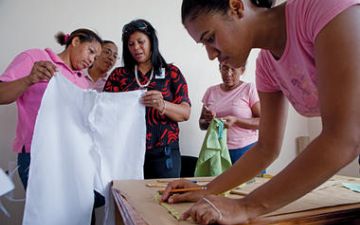Some of the most marginalized people in the Caribbean are Haitian immigrants, and their descendents, living in the Dominican Republic. Although there are Dominicans living in conditions of poverty here, Haitians face additional threats to their well-being, including racial discrimination, exploitation and deportation – conditions that reflect the historically hostile relationship between the two countries of Hispaniola.
Haitians have long provided cheap labor in the Dominican Republic. They fueled the sugar industry here, and more recently the tourism and construction boom. But their status is precarious; many find themselves trapped in a sort of stateless limbo – no longer citizens of Haiti, but also rejected by the Dominican government, and unable to access health care or education. Today, hundreds of thousands of former workers live on the country's batayes, shantytowns that once used to house sugar industry workers, where they have few political rights, and where HIV rates are some of the highest in the Western Hemisphere. Many Haitian women – as well as men and children – are involved in sex work, one of the only ways to earn cash in these forgotten sugar communities.
Now, with a devastating earthquake likely to send more Haitians across the border in search of work in construction, tourism and agriculture, the plight of these Haitians in the Dominican Republic – a population that some estimates put at 1 million people – is even more pressing.
This print, broadcast and multi-media project explores the challenges Haitians face in the Dominican Republic – as well as those encountered by other marginalized groups – with a particular focus on one of the deadliest results of their predicaments: HIV-AIDS.
The Pulitzer Center's reporting on HIV/AIDS in the Caribbean was made possible with support from the MAC AIDS Fund.


